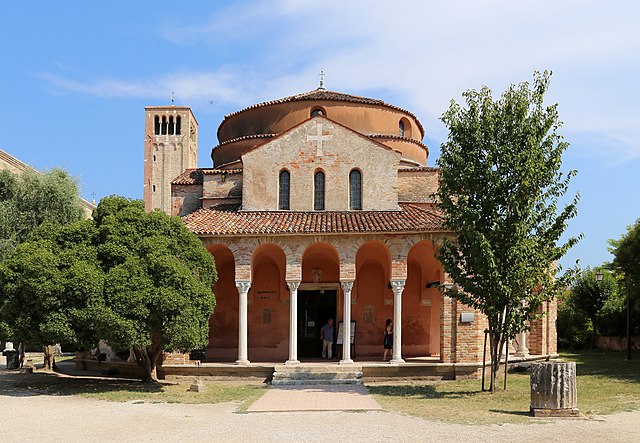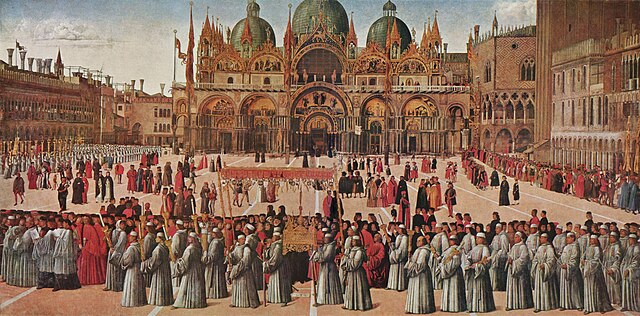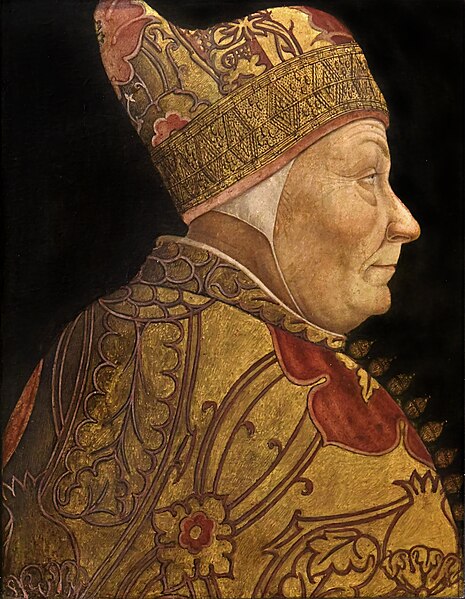The Stato da Màr or Domini da Mar was the Republic of Venice's maritime and overseas possessions from around 1000 to 1797, including at various times parts of what are now Istria, Dalmatia, Montenegro, Albania, Greece and notably the Ionian Islands, Peloponnese, Crete, Cyclades, Euboea, as well as Cyprus.
Destruction of the Parthenon in Athens by Venetian commander Francesco Morosini in 1687, early-18th century depiction
The Republic of Venice or Venetian Republic, traditionally known as La Serenissima, was a sovereign state and maritime republic in parts of the present-day Italian Republic, Istria and Dalmatia that existed for 1,100 years from 697 until 1797. Centered on the lagoon communities of the prosperous city of Venice, it incorporated numerous overseas possessions in modern Croatia, Slovenia, Montenegro, Greece, Albania and Cyprus. The republic grew into a trading power during the Middle Ages and strengthened this position during the Renaissance. Most citizens spoke the Venetian language, although publishing in Italian became the norm during the Renaissance.
The Church of Santa Maria Assunta, on the island of Torcello, was the main place of worship in the Venetian Lagoon between the 7th and 9th centuries.
The church of Santa Fosca, built in the 12th century, is an example of Byzantine influence in Venetian culture.
Painting by Gentile Bellini depicting St Mark's Square in the 1490s
Francesco Foscari was the 65th Doge of the Republic of Venice from 1423 to 1457





